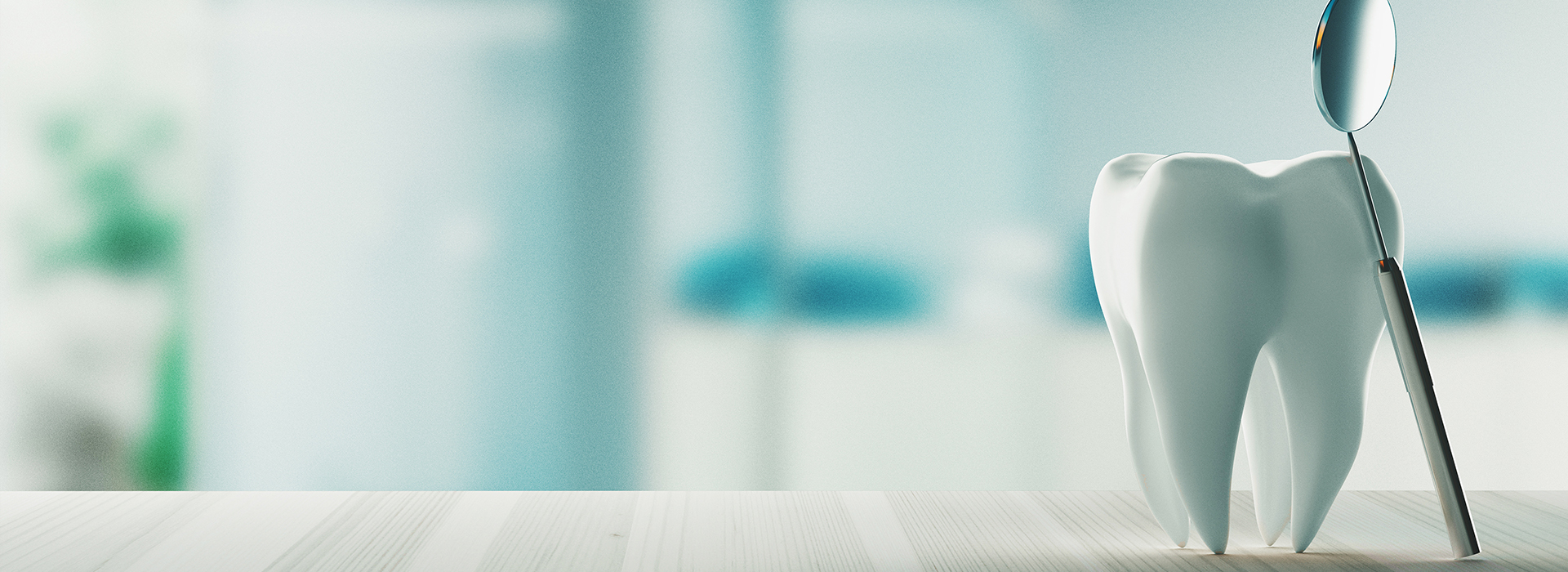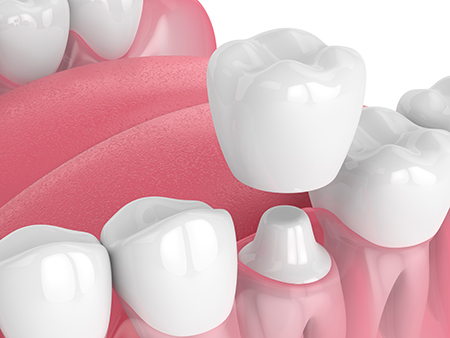
At the office of Suss Dental Group, our approach to restorative care combines modern materials with careful planning so each patient receives a durable, natural-looking result. We prioritize clear communication and evidence-based recommendations so people understand why a treatment is recommended and what to expect from the process.
Teeth are remarkably resilient, but they are still susceptible to decay, breakage, and wear. In many situations a filling restores form and function, but when a tooth has lost substantial structure or has been weakened by prior treatment, a crown remains the most reliable way to rebuild strength and protect the underlying tooth.
Ceramic crowns give clinicians a way to restore teeth without relying on metal frameworks. Advances in ceramic technology allow us to achieve both the strength needed for function and the optical characteristics that match surrounding teeth—resulting in restorations that look and feel natural while preserving biocompatibility.
Deciding whether to place a crown depends on how much healthy tooth remains and the forces the tooth must withstand. Crowns are often chosen when a tooth has extensive decay, has been fractured, or has been weakened by repeated restorations. They encapsulate the remaining tooth structure and distribute biting forces more evenly than a large filling can.
A crown is also the restoration of choice after root canal therapy for many teeth. Root-treated teeth can become brittle over time, and a full-coverage crown protects them from fracture. Similarly, teeth that serve as supports for bridges or that cap dental implants typically require a crown to achieve reliable, long-term function.
Patients who grind or clench their teeth, or who have had large or failed fillings, commonly benefit from crowns because these restorations restore the tooth’s original contours and offer superior resistance to masticatory stresses. In cosmetic cases, crowns can also correct size, shape, and color discrepancies when less invasive options are inadequate.
Repairing a tooth with severe decay or structural damage
Replacing a large, broken, or failing filling
Restoring a dental implant or serving as a bridge abutment
Providing protection for a tooth after root canal treatment
Improving the appearance of a misshapen or discolored tooth

All-ceramic crowns are engineered to mimic the light transmission and surface texture of natural enamel. Unlike restorations with metal substructures, modern ceramics produce lifelike translucency and shading, which helps the crown integrate seamlessly with adjacent teeth even under close inspection.
Beyond aesthetics, contemporary ceramic materials deliver mechanical properties that are well suited to everyday chewing forces. Some ceramics are formulated to be thinner while maintaining strength, which lets us preserve more of the natural tooth during preparation. Metal-free crowns are also advantageous for patients with metal sensitivities and are kinder to surrounding soft tissues.
Other practical benefits include resistance to staining and color stability over time. Because there is no metal margin to reveal itself at the gumline, ceramic crowns maintain a consistent, natural appearance even as gums recede slightly with age—an important consideration for long-term esthetics.
High esthetic fidelity—translucency and color matching
Conservative preparation options with newer materials
Metal-free composition for improved biocompatibility
Stable shade and resistance to everyday staining

Choosing the right ceramic material is a clinical decision that balances strength requirements and aesthetic goals. Back teeth typically need higher fracture resistance, while front teeth demand the highest degree of translucency and nuanced shading. We evaluate each case to determine which material will deliver the best functional and visual outcome.
Several reliable ceramic options are commonly used today. Lithium disilicate offers an attractive blend of strength and esthetics for many anterior and posterior restorations. Pressable porcelain with leucite reinforcement can produce exceptional surface characterization for front teeth. Zirconia varieties—ranging from monolithic forms for posterior strength to high-translucency formulations for improved esthetics—provide versatile solutions across different situations.
Material selection also considers opposing teeth, bite patterns, and the patient’s long-term oral health. For patients with heavy bite forces or parafunctional habits, a tougher ceramic solution can help reduce the risk of chipping. For smiles where the finest color match is essential, layered or highly translucent ceramics may be recommended.
Lithium disilicate porcelain crowns for a balance of strength and beauty
Leucite-reinforced pressable ceramics for precise esthetic work
Solid (monolithic) zirconia when maximum durability is required
High-translucent zirconia where enhanced optical properties are needed

Restorative care begins with a thorough assessment: we review the tooth’s structural integrity, take digital radiographs if indicated, and discuss your cosmetic goals. When a crown is recommended, the next steps usually involve tooth preparation, impression taking, and fabrication planning so the restoration integrates with your bite and smile.
Many practices now use digital impressions and CAD/CAM workflows to capture precise measurements and streamline communication with the dental laboratory. These technologies enhance fit and reduce the need for remakes. Depending on the chosen method, crowns can be milled with exceptional accuracy to match contours and occlusion.
After the crown is fabricated, the clinician verifies fit, occlusion, and shade, making any necessary refinements before final cementation. Detailed postoperative instructions help patients adjust to the new restoration and maintain comfort while the crown becomes fully integrated into daily function.
Ceramic crowns are durable, but like natural teeth they benefit from consistent care. Daily brushing with a soft-bristled toothbrush, regular flossing, and routine dental checkups keep both the crown and the surrounding gum tissue healthy. Professional cleanings and periodic examinations allow the dentist to monitor margins and address any early signs of wear.
For patients who grind their teeth, wearing a protective nightguard can help shield crowns from excessive forces that might otherwise cause wear or chipping. Avoiding hard, brittle foods directly on a crown—such as shell-covered nuts or ice-chewing—also reduces the chance of accidental damage.
When a crown requires attention—for example, if a margin becomes exposed or a minor chip occurs—interventions range from polishing and repair to replacement if necessary. Regular follow-up visits allow us to catch and manage concerns early so restorations continue to perform well over time.
In summary, ceramic crowns offer a modern, metal-free way to restore strength and appearance to compromised teeth. If you’d like to learn more about whether a ceramic crown is the right option for your smile, contact Suss Dental Group for more information.

While a dental filling is designed to replace a portion of a decayed or damaged tooth, a dental crown offers full coverage to restore the tooth’s entire outer surface. A well-fitting dental crown not only protects and strengthens the underlying tooth structure, but it also restores the tooth’s appearance and function.
The procedure for getting an all-ceramic crown is much like the procedure for getting any other type of crown. In all cases, the tooth needs to be prepared, an impression taken, and a permanent crown cemented into place. A single all-ceramic crown can typically be fabricated over the course of two visits. However, with CAD/CAM technology, a same-day crown can be fabricated from start to finish in a single visit. With the first approach, a temporary crown is typically worn until the second visit, when the permanent restoration is placed. As with every treatment plan, our office will explain your best options in care.
As the name implies, a temporary crown is only worn for a short time until the permanent crown is placed. A temporary crown is typically fabricated from durable tooth-colored dental acrylics. While designed to protect the underlying tooth between appointments, and until your new permanent crown gets placed, a temporary crown is also fabricated to look like a natural tooth and maintain the look of your smile.
While you should feel better having an attractive and functional tooth to restore your smile, your tooth may feel a little sensitive following treatment. This initial sensitivity will subside. We take great care to make sure your new restoration looks great, fits well, and your bite is perfect. However, we’re always happy to make any minor adjustments to ensure your comfort.
With some exceptions, teeth with root canal procedures are typically restored and protected from further damage with a full-coverage crown. Based on what’s best for your smile, our office will recommend the most appropriate restoration to maintain the health and longevity of your tooth following a root canal procedure.
A dental crown is a long-term restoration that, if properly cared for, can serve you well for many years to come. Once your new crown is placed, it requires the same brushing, flossing, and periodic checkups as your natural teeth. Avoid biting your fingernails and chewing on hard or sticky objects such as ice, pencils, or taffy, which can damage or loosen your crown. Remember, clenching and grinding your teeth puts excessive pressure on both natural teeth and dental restorations. Unless treated, this habit can compromise the longevity and integrity of your dental work, including crowns.
Although your new all-ceramic crown restores the tooth's strength, form, and function, you can still develop dental disease in the absence of proper care. To prevent gum disease and tooth decay, it’s essential to brush and floss as instructed and see our office for routine checkups, cleanings, and care.
How long a dental crown lasts depends on various factors, including your level of oral care, diet, and oral habits. While the standard answer is that dental crowns can last anywhere from 5 to 15 years, existing literature confirms that most dental crowns remain in place at 15 to 20 years.
At the office of Suss Dental Group, we strive to provide the highest quality of care to address all your dental needs. Once we’ve had the opportunity to examine your smile, we can give you a clear picture of any dental issues that are present, along with a quote for how much treatment will be. The cost of dental crowns can vary a little, depending on the type of crown and its location. Our goals are to provide the highest quality of care and help patients begin treatment without additional financial stress or delay. We’re always happy to answer all your questions on dental insurance coverage, available financing, and payment plans.
Coverage for all-ceramic crowns depends on your dental insurance plan. Today, many dental plans provide some level of coverage for all-ceramic crowns. At the office of Suss Dental Group, we work with patients to optimize their dental benefits and get the care they need to maintain healthy and beautiful smiles!
Ceramic crowns are full-coverage dental restorations fabricated entirely from advanced porcelain or zirconia-based materials to rebuild a damaged tooth. These restorations are engineered to replicate the translucency, shading and surface texture of natural enamel while providing the structural support needed for normal chewing. Because they are metal-free, ceramic crowns offer improved biocompatibility and avoid the dark margins that can appear with metal-substructure restorations.
Modern ceramics are available in a range of formulations designed to balance strength and esthetics, which allows clinicians to select a material suited to the position of the tooth and the patient’s long-term needs. The laboratory or CAD/CAM system layers or mills these materials to match the surrounding teeth so the crown integrates visually with the smile. Proper case selection and skilled finishing are important to achieve a lifelike result.
A ceramic crown is typically recommended when a tooth has lost substantial structure due to decay, fracture or repeated restorations that compromise its strength. Large fillings can leave a tooth vulnerable to further breakage because they do not envelop and protect the remaining tooth the way a crown does, so full coverage is often the more predictable option. Crowns are also commonly used to protect teeth after root canal therapy, to restore implant abutments or to serve as bridge retainers.
Clinicians consider factors such as how much healthy tooth remains, the location of the tooth in the mouth and the patient’s bite forces before recommending a crown. For patients who grind or clench their teeth, a ceramic crown can restore proper contours and reduce the risk of further failure when combined with protective measures. Cosmetic goals are also important; when color, shape or alignment cannot be corrected with conservative treatments, a crown may provide the desired outcome.
Ceramic crowns differ from metal-based crowns primarily in esthetic properties and biocompatibility, since ceramics mimic the light transmission of natural enamel and lack a metal substructure. Metal-based crowns can be very strong, but the metal layer may affect translucency and, over time, reveal a dark margin near the gumline as tissues change. Ceramic options eliminate that concern and are often chosen for visible teeth where a precise color match is important.
From a functional perspective, contemporary ceramic materials—especially high-strength zirconia—offer excellent resistance to chewing forces and can be appropriate for posterior teeth when selected and designed correctly. Each material class has trade-offs: some ceramics provide superior translucency while others prioritize fracture toughness, so the choice depends on the clinical demands of the case and the aesthetic priorities of the patient.
Several ceramic materials are commonly used for crowns, each with distinct mechanical and optical characteristics. Lithium disilicate combines attractive esthetics with reliable strength for many anterior and posterior restorations, while leucite-reinforced pressable porcelains can yield exceptional surface characterization for front teeth. Zirconia is available in monolithic forms for maximum durability and in high-translucency formulations that provide improved esthetics where needed.
The clinician evaluates opposing dentition, occlusal forces and esthetic goals when selecting a material, sometimes using layered techniques or specialized glazing to achieve the final appearance. Advances in material science have expanded conservative preparation protocols, allowing preservation of more natural tooth structure with certain ceramic systems. Long-term success depends on proper material selection, precise laboratory work or CAD/CAM milling, and accurate occlusal adjustment.
The crown process begins with a comprehensive assessment that includes a clinical exam, digital radiographs when indicated and discussion of cosmetic objectives. Tooth preparation involves gently shaping the tooth to create clearance for the restorative material, followed by an impression or a digital scan to capture precise measurements for the laboratory or in-office milling system. Temporary protection is often placed while the final restoration is fabricated, and final seating involves verification of fit, occlusion and shade before cementation.
Many practices now use CAD/CAM workflows and digital impressions to streamline communication and improve precision, which can reduce the need for adjustments and remakes. The final visit typically includes careful polishing and bite checks to ensure comfortable function, along with instructions on caring for the new crown. Follow-up appointments allow the clinician to monitor the restoration and surrounding tissues as they adapt to the modification.
The longevity of a ceramic crown depends on material selection, the occlusal forces it endures, oral hygiene and regular professional care. With appropriate maintenance and absence of traumatic forces, many ceramic crowns perform well for years and often for a decade or longer, although individual outcomes vary. Monitoring by dental professionals helps identify early wear, marginal issues or changes in the supporting tooth that might require attention.
Preventive strategies such as managing bruxism with a nightguard, preserving surrounding gum health and avoiding chewing excessively hard objects can extend a crown’s service life. When minor repairs are possible, polishing or selective resurfacing may address small chips; more significant damage typically requires replacement. Regular examinations and radiographs allow clinicians to evaluate both the crown and the underlying tooth structure over time.
Caring for a ceramic crown is similar to caring for a natural tooth: brush twice daily with a soft-bristled brush, floss once daily and maintain routine dental checkups and professional cleanings. Using nonabrasive toothpaste helps preserve the crown’s surface finish and reduces wear over time. Attention to gum health is important because well-maintained soft tissues help preserve the crown’s margins and overall esthetics.
For patients who clench or grind their teeth, wearing a custom nightguard can protect crowns from excessive forces that might cause chipping or loosening. Avoiding habits like chewing ice or biting on hard shells reduces the risk of accidental damage. If you notice sensitivity, looseness, or a visible margin, contact the office promptly for evaluation to prevent more extensive problems.
Yes, ceramic crowns can be used on both anterior and posterior teeth, but the material choice and design vary depending on the tooth’s location and function. Anterior restorations typically require the highest level of translucency and color nuance to blend seamlessly with adjacent teeth, so more esthetic formulations or layered techniques are often chosen. Posterior teeth need materials with higher fracture resistance to withstand greater masticatory forces, making robust zirconia or reinforced ceramics suitable options.
When treating posterior teeth, clinicians balance durability with occlusal considerations, sometimes opting for monolithic ceramics that reduce the risk of chipping. For visible teeth, careful shade selection and surface characterization are prioritized to achieve a natural appearance. A thorough evaluation guides the choice so each crown performs well both functionally and visually.
Ceramic crowns are an excellent option for patients with known metal sensitivities because they are metal-free and therefore avoid potential allergic or galvanic reactions associated with metal restorations. The biocompatible nature of contemporary dental ceramics makes them well tolerated by most patients and gentle on surrounding soft tissues. This aspect is particularly valuable for those who have experienced irritation or reactions to metallic dental work in the past.
Clinicians still evaluate the overall clinical picture—such as the need for strength in posterior areas and the desired esthetic outcome—when recommending a ceramic solution. In many cases, zirconia or other high-strength ceramics provide the necessary durability without introducing metal components. A careful material selection process ensures both comfort and longevity for patients with sensitivity concerns.
Digital workflows, including intraoral scanning and CAD/CAM milling, have improved the precision and consistency of ceramic crown fabrication by capturing highly accurate impressions and enabling tight tolerances during milling. These technologies enhance fit and occlusal harmony, reduce chair time in many cases and streamline communication between the clinician and the dental laboratory. Digital shade matching and design tools also assist in achieving a closer esthetic match for the final restoration.
When combined with skilled clinical technique and appropriate material selection, digital workflows contribute to predictable outcomes and fewer remakes. They also facilitate in-office milling for same-day restorations in selected cases, which can be advantageous for patient convenience and workflow efficiency. Regardless of the method used, final esthetic adjustments and careful cementation remain essential to long-term success at the office of Suss Dental Group in Bergenfield, NJ.

Ready to schedule your next dental appointment or have questions about our services?
Contacting Suss Dental Group is easy! Our friendly staff is available to assist you with scheduling appointments, answering inquiries about treatment options, and addressing any concerns you may have. Whether you prefer to give us a call, send us an email, or fill out our convenient online contact form, we're here to help. Don't wait to take the first step towards achieving the smile of your dreams – reach out to us today and discover the difference personalized dental care can make.